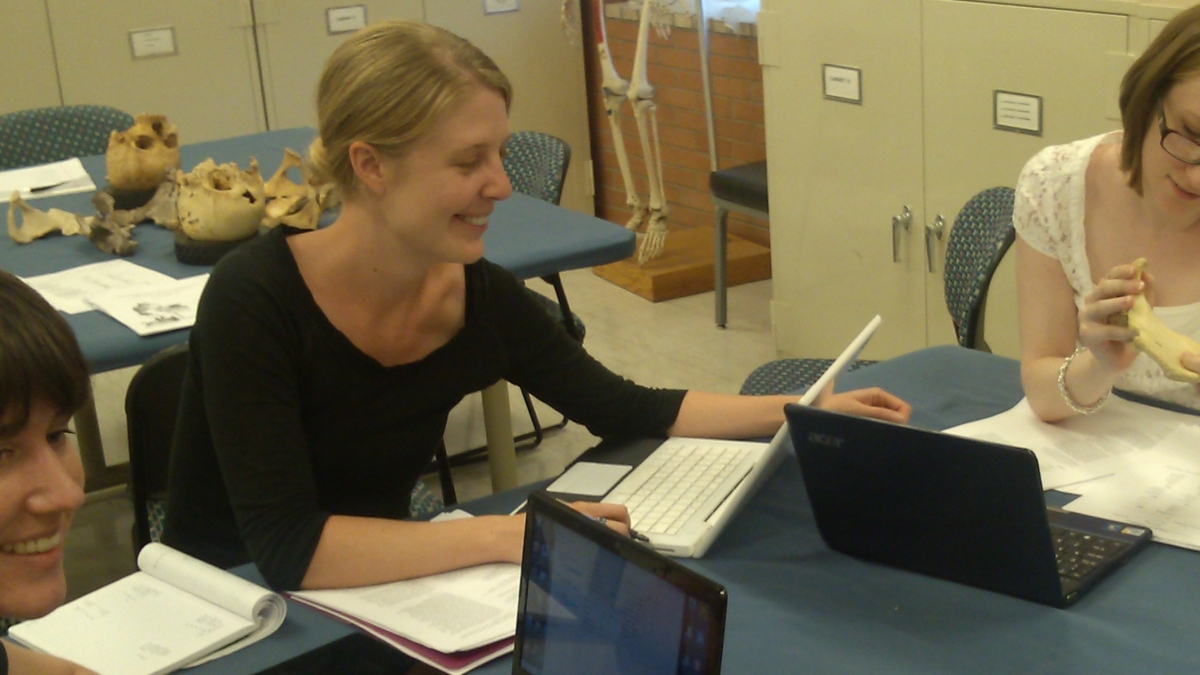Bioarchaeology luminary helps students learn from best in the field

Analyzing skeletal remains may not be everyone’s cup of tea, but old bones can reveal a great deal to those who are passionate about ancient people and their lives.
The study of human remains in archaeological contexts provides insight into peoples of the past, giving us a better understanding of how we arrived where we are today. Information ranging from what humans ate to where they migrated and how they died, even how diseases evolved, can be gathered through this discipline. In this way, millennia-old trends in population structure and health provide models for contemporary and future human groups.
Bioarchaeology has a strong presence at Arizona State University. It is not only home to the Center for Bioarchaeological Research, but also the woman who coined the term “bioarchaeology” nearly four decades ago: Regents’ Professor Jane Buikstra.
Though heavily active in research, Buikstra and the bioarchaeology faculty in the School of Human Evolution and Social Change in the College of Liberal Arts and Sciences are also training the next generation of bioarchaeologists. They are committed to providing unique out-of-the-classroom learning experiences.
The latest is a lecture and workshop series featuring some of the best minds in skeletal aging and paleodemography, a field concerned with estimating vital statistics in ancient populations based on information obtained from skeletal samples.
The series, which launched last spring, will wrap up this month with dual presentations by professor Vera Tiesler of Mexico’s Universidad Autónoma de Yucatán.
“This series has provided invaluable exposure to dynamic and progressive methods for skeletal age estimation,” Buikstra says. “Students have received hands-on training from scholars whose innovative work will have – or has already had – a major impact on paleodemographic research.”
Funding for the series was provided by a Wenner-Gren Foundation grant awarded to Buikstra and Tiesler as part of their project, “Age and Dynasty in Ancient Maya Society.”
The University of Bordeaux’s Stephan Naji kicked off the series last April with an open workshop on how to estimate the age at death of a human by counting layers of the hard tissue deposited annually on tooth roots, much like counting tree rings on a tree trunk.
In the fall, another workshop was presented, this one with Penn State professor of archaeological anthropology George Milner.
Milner directed participants in transition analysis, a method for adult age estimation that applies rigorous statistical procedures to data recorded from bone age indicators and their discrete stages of change. The estimation of age at death for older adults has been a persistent problem for forensic anthropologists and bioarchaeologists alike. The newly developed transition analysis holds promise for solving this problem.
Skeletal remains from Nubian sites excavated by ASU associate professor Brenda Baker in the Fourth Cataract region of Sudan, ASU’s Semna South Nubian collection and teaching collections were used in the workshop, providing students with direct experience working with ancient bones.
In addition, students had the opportunity to listen to two lectures by biological anthropologist Sharon DeWitte on hazards analysis and the demographic repercussions of epidemics – such as the medieval plague – on past populations.
Buikstra believes the lectures and workshops, as well as after-hours mingling opportunities with presenters, have expanded students’ viewpoints by exposing them to the varied perspectives and projects of some of the field’s major players.
She explains, “This has presented students with an opportunity to think critically about some of the challenges that they face while working with skeletal samples, and ways that we can overcome these challenges in order to understand the demographic composition and health of past populations. In addition, the presentations illustrate the manner in which top-notch scholars are addressing complex, as yet incompletely resolved, research issues.”
She notes that participants have seen a number of excellent examples of long-term, productive research efforts and learned a great deal about research design and execution.
While most participants have been bioarchaeology graduate students, graduate students in other programs, as well as undergraduates, have also taken advantage of the series' offerings.
All are welcome to attend the series’ final lectures. “Growing Up Maya: Prehispanic Head-Shaping Practices, Social Meanings and Ethnicity” will be presented at 10:30 a.m., Jan. 23 in SHESC 254. At 10:30 a.m. on Jan. 24 in SHESC 205B, Tiesler will discuss “Age and Dynasty: New Approaches Towards the Assessment of Age, Health and Lifestyle Among Classic Maya Courtiers.” Contact Kathleen Paul for more information.